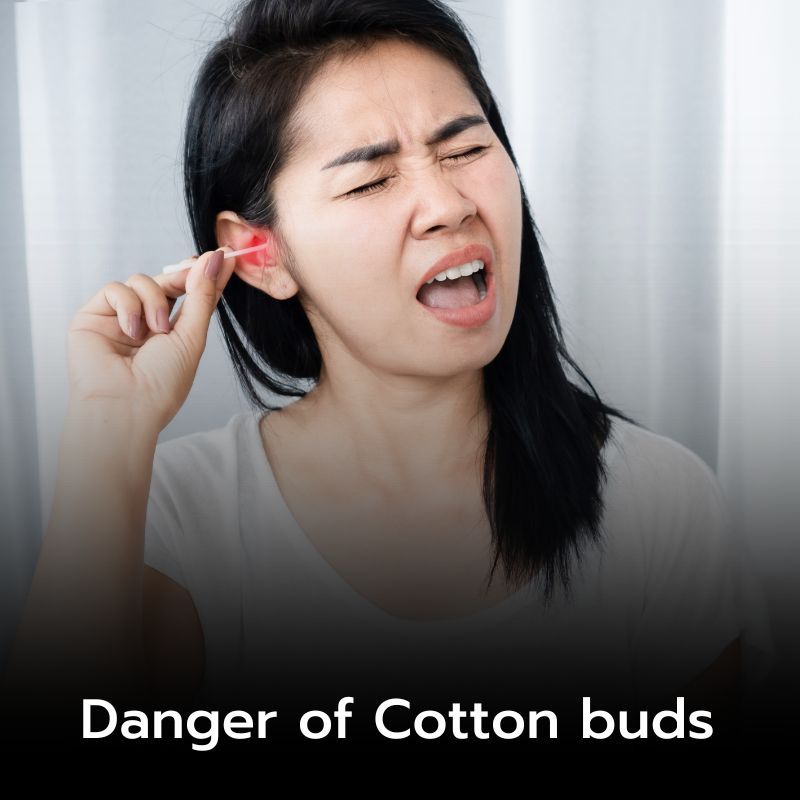Dangers of cotton buds
 Overlooking the potential risks, the use of cotton buds for ear cleaning continues to pose significant dangers to our health and the environment. From causing trauma to the ear canal and tympanic membrane to contributing to environmental pollution, cotton buds have far-reaching negative effects. In this informative blog post inspired by environmental and health advocate Rachel Carson, we will investigate into the various dangers associated with using cotton buds and explore safer alternatives for ear cleaning.
Overlooking the potential risks, the use of cotton buds for ear cleaning continues to pose significant dangers to our health and the environment. From causing trauma to the ear canal and tympanic membrane to contributing to environmental pollution, cotton buds have far-reaching negative effects. In this informative blog post inspired by environmental and health advocate Rachel Carson, we will investigate into the various dangers associated with using cotton buds and explore safer alternatives for ear cleaning.
Brief Overview of Cotton Buds
History of Cotton Buds
For centuries, cotton buds have been used for various purposes, including ear cleaning. Initially designed in 1923 for baby care, concerns arose about their safety in the early 1970s, leading to warnings against using them for ear cleaning.
Common Uses of Cotton Buds
Any discussion about cotton buds often centers around their typical use for ear cleaning. However, this common practice can lead to severe complications such as perforations, infections, and hearing damage.
Understanding the potential dangers of using cotton buds, such as pushing wax deeper into the ear canal, causing blockages and infections, is crucial. It's important to seek safer ear cleaning methods and environmentally friendly alternatives to reduce the risks associated with cotton bud use.
Health Risks
Ear Damage
While cotton buds are commonly used for ear cleaning, they pose a significant risk of causing damage to the ear canal and tympanic membrane. The most common mode of accidental penetrating ear injury in children is cotton-bud induced, often leading to injuries such as perforations and bleeding.
Infections
For many individuals using cotton buds, infections are a concerning risk. The use of cotton buds is associated with infections like otitis externa and other dermatological conditions of the external ear. Retained cotton buds can lead to severe otitis externa, which may be misdiagnosed as malignant otitis externa, especially in elderly patients with chronic conditions.
A study published on PMC found that a considerable number of respondents were unaware of the potential complications of cotton bud use, highlighting a lack of awareness about the risks associated with using cotton buds for ear cleaning. This emphasizes the need for increased education and awareness about the dangers of using cotton buds for ear care.
Environmental Impact
Plastic Pollution
To address the issue of plastic pollution, it's important to consider the environmental impact of cotton buds. They are often made of plastic and not biodegradable, contributing to the growing problem of plastic waste in our environment. The widespread disposal of plastic cotton buds adds to the pollution of our oceans and landfills, posing a serious threat to marine life and ecosystems. To mitigate this impact, it's imperative to seek environmentally friendly alternatives for ear cleaning.
Waste Management
On the issue of waste management, the improper disposal of cotton buds further compounds the environmental impact of these products. When discarded, cotton buds can end up in landfills, where they may take hundreds of years to decompose. Additionally, the cotton fibers in the buds can contribute to litter and pollution in our surroundings. Proper waste management practices, such as reducing the use of single-use plastic products like cotton buds and opting for sustainable alternatives, are crucial in addressing this environmental concern.
Impact awareness is key to preventing further damage to our environment. By making informed choices and adopting sustainable practices, we can reduce the environmental footprint of everyday items like cotton buds, promoting a healthier planet for future generations.
Misuse and Accidents
Children and Pets
All too often, cotton buds are the culprits behind accidental penetrating ear injuries in children. The delicate nature of their ear canals makes them especially vulnerable to trauma from cotton buds. In fact, the most common mode of accidental ear injury in children is cotton-bud induced. It's crucial for parents and caregivers to be aware of the potential dangers and avoid using cotton buds for ear cleaning in children to prevent such unfortunate incidents.
Other Body Parts
All too often, cotton buds are mistakenly used for purposes other than ear cleaning, leading to accidents and injuries. For instance, using cotton buds to clean other body parts can result in injuries, infections, and other complications. The sharp edges of cotton buds can easily cause harm when used on delicate areas. It is necessary to educate individuals on the proper use of cotton buds and promote safer alternatives to prevent such accidents from occurring.
Alternatives to Cotton Buds
Ear Cleaning Methods
Methods of ear cleaning that are safer than using cotton buds include applying a few drops of olive oil or using over-the-counter ear sprays or eardrops to soften and clear unwanted earwax. If these methods do not work, consulting a doctor or audiologist for removal using microsuction is recommended.
Eco-friendly Options
Water-based ear irrigation systems and reusable silicone ear cleaners are eco-friendly alternatives to cotton buds. These options not only help reduce plastic waste but also offer safer and more effective ways of cleaning the ears.
To wrap up
To wrap up, it is crucial to raise awareness about the dangers of using cotton buds for ear cleaning. From potential injuries to the eardrum and hearing loss to environmental pollution caused by their disposal, the risks associated with these seemingly harmless products are significant. Seeking safer alternatives and proper guidance from healthcare professionals is important to protect our ear health and the environment. Let's prioritize our well-being and make informed choices for a healthier future.